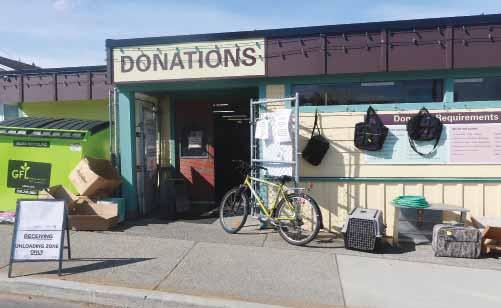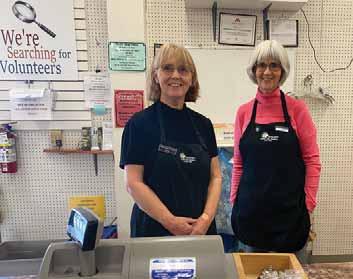
3 minute read
The 5 R's
BY NADINE WONG
Let’s delve into RECYCLE, REUSE, REPAIR, REINVENT and RESCUE.
A University of Waterloo study reveals Canadians discard approximately a billion pounds — nearly 500 kilograms — of fabric-based fashion and home items annually. Researchers from the University of Waterloo and Seneca College pioneered a method to assess textile quality for potential resale, recycling or disposal. Over half of Canada’s textile waste could be reused, while nearly a quarter could be recycled, highlighting the recent state of textile recycling in the country.
Textile waste grows due to the rise of “fast fashion,” with Vancouver’s Think Thrice Campaign urging reduced consumption, repairs and donations. Key industry concerns include water usage, chemicals, short garment lifecycles, end of life waste and agriculture. Changing consumer habits and business practices, such as embracing second-hand clothing and repair initiatives, are vital for reducing textile waste and promoting sustainability.
What sustainable practices do you implement daily to lessen environmental impact?
Fabric's versatility offers endless opportunities. “The most sustainable piece of clothing is one that is already in your closet,” says Michelle Kresnyak, general manager of the Gabriola Island Recycling Organization (GIRO), on its website (www. girodepot.com/2021/09/14/rethink-your-wardrobe/).
At Ladysmith Healthcare Auxiliary Thrift Store, Manager Tara Mchugh-Lee ensures that nothing leaves the store for free, allowing them to support community health initiatives. Donated items that are not sold in-store are sent to those in need through organizations like the Diabetes Association, homeless shelters and the SPCA. Recording Secretary Pam Fraser highlights their efforts to reduce waste, leading to a signi ficant waste reduction over the past five years.
Joy Baxter, a resident who frequents the thrift store on a neardaily basis, is both a local entrepreneur and artist. Joy commented, "I'm transforming thrift store discoveries and fabrics into retro-inspired artworks, crafting fresh pieces for others to appreciate. And I'm revitalizing discarded items, breathing new life into them." Explore her Facebook page, Joy of Vintage, for more.
The Chemainus Hospital Auxiliary Thrift Store website states, “For our customers, buying ‘gently used’ clothing and household items is not only cost-effective, but it also diverts many products from going into the land fills.”

Helen McInnes and Sarah Schmidt lead Mending Mavens, with a Facebook following (www.facebook.com/groups/mendingmavens). “Weekly, we hold mending and sewing gatherings, collaborating monthly with the VIRL Harbourfront Library for workshops on upcycling fabric scraps and hand sewing,” says Helen. “Our ‘Mending and More’ sessions offer a safe space to learn various skills, aiming to extend textile lifespan and reduce land fill waste. We plan to expand with community workshops and ultimately establish a central hub for textile redistribution and ongoing education.”
Currently meeting on Thursdays at Makerspace Nanaimo, their mission is supported by their commitment to sustainability. Join them in mending the world, one stitch at a time. “Bring your sewing project and become part of our community!”





